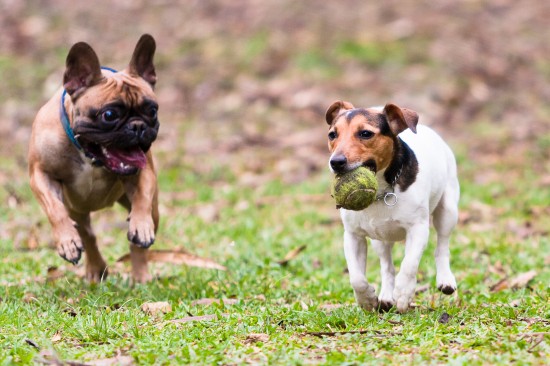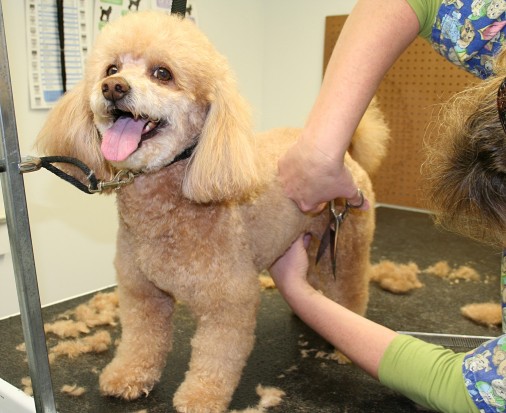
Most families have a first aid kit in their car and another at home. It is important because you never know when someone will cut a finger, bump their head or come down with a fever. Likewise most people would consider their dog as an important, loved member of the family. But what is in the human first aid kit could be of little use when your dog needs help. People medicines can even be deadly.
A portable Canine First Aid Kit is an important tool for all dog owners. And as your dog matures, it becomes essential. A well-stocked and organized box with supplies will be invaluable if your pet needs immediate care and may save you from having to make a trip to the vet. It could even save your dog’s life.
Remember that when giving a dog first aid, they are in pain and do not always understand that you are trying to assist them. Even if your pet has a great temperament and has never bitten anyone, you should put on a muzzle before trying to give first aid.
20 Essentials of a CANINE First Aid Kit
(And common uses for the items.)
1. Rubbing Alcohol (Tick and thorn removal.)
2. Antiseptic Lotion (Clean out cuts or scratches.)
3. Antibacterial Ointment (Prevent infection.)
4. Bandages or Rolled Gauze (Temporarily binding of wounds.)
5. Cotton Swabs (Remove debris from cuts. Antiseptic Application. Ear cleaning.)
6. Elizabethan Collar (Prevent dog from chewing bandages and licking wounds)
7. Non-sticking Adhesive Plaster (Apply to wound to keep dressing in place.)
8. Eye Wash (Wash debris from eyes.)
9. Rectal Thermometer and Petroleum Jelly (Take Temperature*.)
10. Muzzle (Prevent biting when treating the dog.)
11. Kaolin Pectate/Milk of Magnesia (Treat diarrhea.)
12. Top Quality Nail Clippers (Trim nails.)
13. Tweezers with rounded ends (Remove thorns or debris from wounds.)
14. Thermal or Regular Blanket (Maintain body temperature.)
15. Styptic pencil, cotton wool and gauze (Stop blood flow.)
16. Scissors (Trim hair near wounds.)
17. Flashlight (See in ears, throat etc.)
18. Eyedropper (Administer medications.)
19. Strong Packing Tape and pieces of wood or stiff cardboard (For Splints)
20. Towels–Paper and Regular (Stopping blood, drying etc.)
21. Veterinarian’s Phone Number/Emergency Number
It is also a good idea to ask your veterinarian for any recommendations on medications that should be kept on hand for emergencies.
*Normal Canine Temperature is 101-102.5 degrees Fahrenheit (38.3-39.2 degrees Celsius)
Copyright 2006 Dave Eckholm/Old Dog Paws
Dave Eckholm is the owner and creator of http://www.olddogpaws.com, a site dedicated to the care and comfort of our old friends. As our dog Tikki began to lose his eyesight and became grey around his muzzle, we were concerned for his quality of life. As a senior dog, he started to have special needs. We searched for new ideas, resources and products to enhance his life. Old Dog Paws shares this information, including a national pet sitter directory, with all dog lovers so your friend can enjoy wonderful senior years too!
 The Four Unspoken Rules Of Dog Socialisation And Play
The Four Unspoken
The Four Unspoken Rules Of Dog Socialisation And Play
The Four Unspoken
 Have You Heard Of Tom And Jerry Syndrome In Cats?
Have You Heard Of
Have You Heard Of Tom And Jerry Syndrome In Cats?
Have You Heard Of
 Caring For Curly Coated, Low-shedding Dogs
Caring For Curly
Caring For Curly Coated, Low-shedding Dogs
Caring For Curly
 Facts About Pet Vaccinations You Need To Know
Facts About Pet Vaccinations You Need To Know
Facts About Pet Vaccinations You Need To Know
Facts About Pet Vaccinations You Need To Know
 What should Dog Food contain ?
What should Dog Food contain ?
The point of yo
What should Dog Food contain ?
What should Dog Food contain ?
The point of yo
Copyright © 2005-2016 Pet Information All Rights Reserved
Contact us: www162date@outlook.com